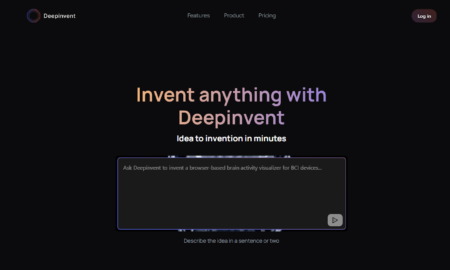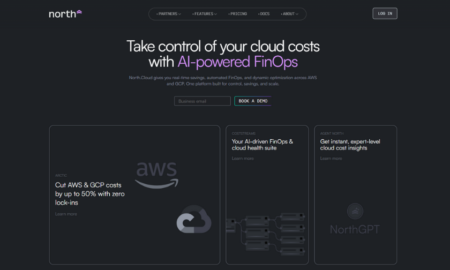Posts By Angela Scott-Briggs
-

 21Technology
21TechnologyTech-Enabled Shipping: How Advanced Tracking Is Transforming Customer Experience and Operational Efficiency
In today’s fast-paced economy, speed, transparency and reliability in shipping are no longer optional — they’re expected. Advanced tracking technologies — driven...
-

 935Business Reviews
935Business ReviewsHow To Start A Content Marketing Business: A Business You Can Manage From Anywhere, Anytime
Launching a content marketing business that thrives on author bylines in high-authority media offers a compelling path to influence and remote profitability....
-

 296Blockchain
296BlockchainBlockchain Government Regulation: Lessons from DOGE
The third edition of the London Blockchain in Government Summit delivered a compelling blend of real-world case studies and forward-thinking policy discussions,...
-

 191Business news
191Business newsHow to Use Content Marketing Strategy to Attract More Clients
Content marketing has evolved from a supplementary tactic to a core pillar of customer acquisition in the modern digital marketplace. High-quality, expert-authored...
-

 198Artificial intelligence
198Artificial intelligenceBusinesses Seek To Automate White Collar Work
Businesses up and down the country are looking to automate some elements of white collar work. While the AI singularity isn’t quite...
-

 212Gadgets
212GadgetsDIY Meets High-Tech: How HSFTOOLS Makes Thermal Imaging Easy for First-Time Users
HSFTOOLS is launching its largest discount campaign of the year in time for Prime Day, offering up to 32% off across its...
-

 751Business news
751Business newsInvisible, Reliable, Award-Winning: How Oleg Mikhelson Quietly Reinvented E-Commerce Infrastructure
In the world of digital commerce, infrastructure rarely makes headlines – until it fails. But what if failure simply doesn’t happen? That’s...
-

 1.2KBig Data
1.2KBig DataRahman Shittu: The Data Science Powerhouse Redefining Innovation in the US and Beyond
Few figures have emerged with the force, vision, and technical brilliance of Rahman Akorede Shittu in a world racing toward a digital-first...
-

 625RegTech
625RegTechSibongile Gobile: The Legal Visionary Redefining South Africa’s Tech Frontier
In the heart of South Africa’s dynamic tech revolution stands an unlikely figure who is challenging conventions and redefining what it means...
-

 849PropTech
849PropTechHow Digital Twins Are Transforming Commercial Real Estate in Toronto
Toronto’s commercial real estate market is at a pivotal moment. Buildings once bustling with office workers now sit partially empty. Tenants are...
-

 679How To
679How ToBuilding Your Dream Home: Location, Design & Lifestyle Considerations
There’s something uniquely satisfying about envisioning your dream home, a space designed entirely around your preferences and lifestyle. But in today’s fast-moving...
-

 594Artificial intelligence
594Artificial intelligenceSuper Intelligence: Meet Deepinvent AI Engine Compressing Years of R&D into Minutes.
Companies are always seeking the fastest ways to streamline innovation and progress by inventing the latest technologies for multiple industries, ranging from...
-

 651Fintech News
651Fintech NewsFintech Data Infrastructure Requirements in the Era of AI and Clouds
With the rapid adoption of AI functions in financial applications, scalability, high speed and reliable data storage are critical. Stanislav Lukianov, currently...
-

 368Business news
368Business newsLev Mazaraki: Why the future of remote work is visual
My name is Lev Mazaraki. I’ve been traveling the world all my life, trying to capture the spirit of different cultures and...
-

 679Cloud Computing
679Cloud ComputingNorth.Cloud Raises $5 Million to Launch New Operating System for More Sustainable and Intelligent Cloud Management
North.Cloud is an AI-powered cloud optimization platform designed to help companies improve the efficiency and reduce the expenses of their cloud infrastructure....
-

 699Internet of Things
699Internet of ThingsSmart Home Upgrades: How to Permanently Remove Mold from Bathroom Ceiling
Is your bathroom ceiling constantly battling mold, no matter how often you clean it? You’re not alone—and the solution might be smarter than...
-

 657Tech Startups
657Tech StartupsFrom Startups to Scaleups: The Non-Negotiables of Building Trust in SaaS
Building a SaaS company is like dating in a post-Tinder world. You get one shot to make an impression, and if your...
-

 1.3KArtificial intelligence
1.3KArtificial intelligencePanzura Symphony Tackles Trillion-Dollar Permission Sprawl Crisis
Unstructured data management provider positions itself at the forefront of AI readiness with automated permission remediation capabilities AI is transforming business operations...
-

 1.3KEdTech
1.3KEdTechHow to Enroll Your Child in School in Cyprus?
Enrolling a child in school in Cyprus is an important process that requires an understanding of local laws, the education system, and proper documentation....













